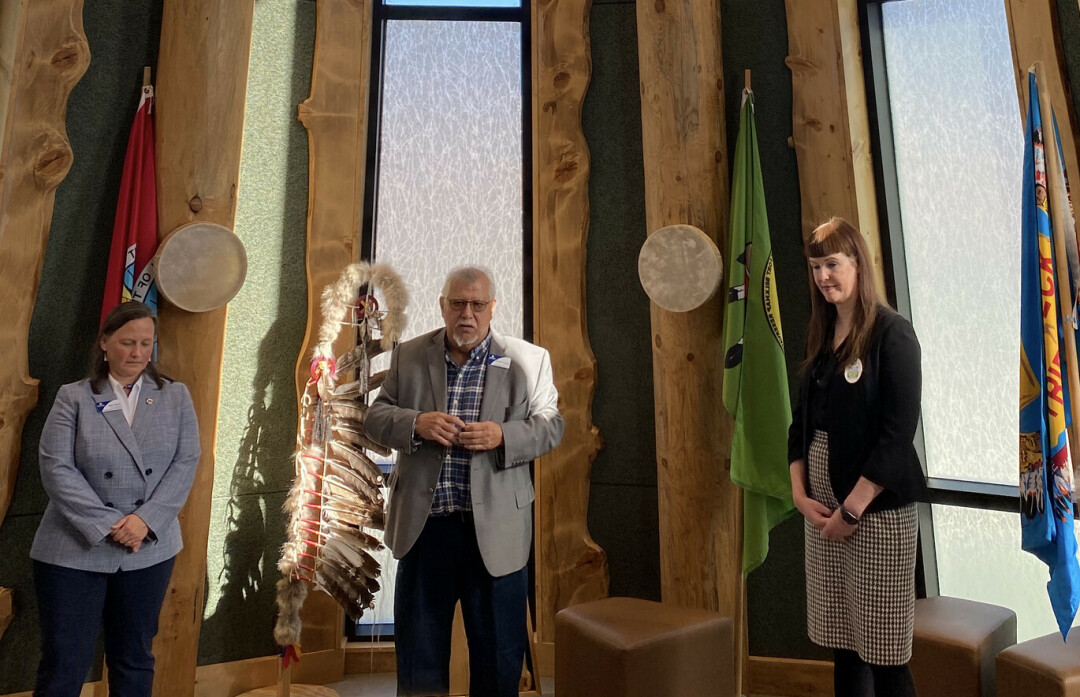BOZEMAN – As fall approaches and bear activity increases, Montana Fish, Wildlife & Parks staff in southwest Montana have recently responded to many reports of bear conflicts. These conflicts stem from a mix of human safety concerns, habituated bear behavior, unsecured attractants and other issues.
On Sept. 20, FWP bear specialists captured an adult female grizzly bear on private land in the Gardiner Basin. In the weeks prior to the capture, the bear had broken into a fenced compound, frequented a home that had no unsecured attractants or natural foods, and killed chickens secured by electric fencing. The bear was largely undeterred by hazing efforts, which included rubber bullets, paintballs, electric fencing and noise-making devices. The bear also had been captured and relocated twice in prior years because of similar conflicts.
Due to the recent conflicts and the bear’s history, and in consultation with the U.S. Fish Wildlife Service (USFWS), FWP euthanized the bear on Sept. 21.
The female grizzly was accompanied by a small cub, which was captured on Sept. 21. The cub will be transferred to a zoo in the coming weeks.
Montana’s archery hunting season overlaps with the time of year bears are more actively seeking food. Several hunters have reported encounters with grizzly bears this year.
On Sept. 20, FWP received a report of an adult male grizzly bear that was shot and killed in self-defense by a group of hunters on private land west of Emigrant. The hunters were not injured. FWP and the USFWS confirmed the grizzly bear mortality and are still investigating the incident.
On Sept. 14, a group of hunters reported they were charged by a grizzly bear near Rock Creek in the Tom Miner Basin. One of the hunters shot at the bear with a pistol, and the bear ran away. The U.S. Forest Service issued a temporary road closure while FWP wardens and bear specialists investigated the incident. After searching from the ground and from a helicopter, no sign of an injured bear or bear tracks were found. The area was reopened with an advisory of high bear activity.
In recent weeks, FWP game wardens and bear specialists have also responded to numerous conflicts with black bears in residential areas of Bozeman, Belgrade, Big Sky, Helena and Butte. Several black bears have had to be euthanized after they gained access to garbage and other unsecured attractants, creating human safety risks and habituated bear behavior.
Be Bear Aware
Unsecured attractants, such as garbage and bird feeders, can lead to human safety risks and property damage. Relocating and releasing bears that have associated human activity with food usually leads to further conflicts because bears often return to the same area where they were captured to look for food. Unfortunately, bears in these situations can’t be rehabilitated, so they often must be euthanized.
Montana is bear country. Grizzly bear populations continue to become denser and more widespread in Montana, increasing the likelihood that residents and recreationists will encounter them in more places each year. Bears also become more active in late summer and fall as they spend more time eating in preparation for hibernation.
Avoiding conflicts with bears is easier than dealing with conflicts. Here are some precautions to help residents, recreationists and people who work outdoors avoid negative bear encounters:
• Keep garbage, bird feeders, pet food and other attractants put away in a secure building. Keep garbage in a secure building until the day it is collected. Certified bear-resistant garbage containers are available in many areas.
• Never feed wildlife. Bears that become food conditioned lose their natural foraging behavior and pose threats to human safety. It is illegal to feed bears in Montana.
• Carry bear spray and be prepared to use it immediately.
• Travel in groups whenever possible and make casual noise, which can help alert bears to your presence.
• Stay away from animal carcasses, which often attract bears.
• Follow food storage orders from the applicable land management agency.
• If you encounter a bear, never approach it. Leave the area when it is safe to do so.
Hunting in places that have or may have grizzly bears—which includes areas of Montana west of Billings—requires special precautions:
• Carry bear spray and be prepared to use it immediately.
• Look for bear sign and be cautious around creeks and areas with limited visibility.
• Hunt with a group of people. Making localized noise can alert bears to your presence.
• Be aware that elk calls and cover scents can attract bears.
• Bring the equipment and people needed to help field dress game and remove the meat from the kill site as soon as possible.
• If you need to leave part of the meat in the field during processing, hang it at least 10 feet off the ground and at least 150 yards from the gut pile. Leave it where it can be observed from a distance of at least 200 yards.
• Upon your return, observe the meat with binoculars. If it has been disturbed or if a bear is in the area, leave and call FWP.
Grizzly bears in the lower 48 states are listed as threatened under the Endangered Species Act. Management authority for grizzlies rests with the USFWS, working closely in Montana with FWP, the Forest Service, the National Park Service, the Bureau of Land Management, the U.S. Geological Survey, Wildlife Services, and Native American tribes. This collaboration happens through the Interagency Grizzly Bear Committee.
For more information and resources on bear safety, visit fwp.mt.gov/conservation/wildlife-management/bear.




News Comments
Thank you
Open Auditions for Annie
Monday, Sep. 16, 2024
I’m at the Bozeman airport where your painting, “Blowing East” is displayed. It’s absolutely gorgeous! Bravo, Marci!!
The Artists’ Gallery in Bozeman’s Emerson Cultural Center May Exhibits
Sunday, Jun. 30, 2024
This is so typical of a sign in, which we should not have to do to check if we or some one in our party got a permit. I have been working or "creating an account" for 30 minutes and just get the same ...
Smith River permit drawing results available
Sunday, Mar. 10, 2024
I have struggled with this podcast and my own participation therein, the event itself obviously traumatic, but beyond that my inability to reach anyone and convey anything resembling truth. The person ...
Billings, MT Case Becomes True Crime Podcast | 'An Absurd Result'
Marktokarski
Saturday, Jan. 20, 2024